SaaSOps Automation Report 2022: The Rise of Zero-Touch IT
June 16, 2022
5 minute read
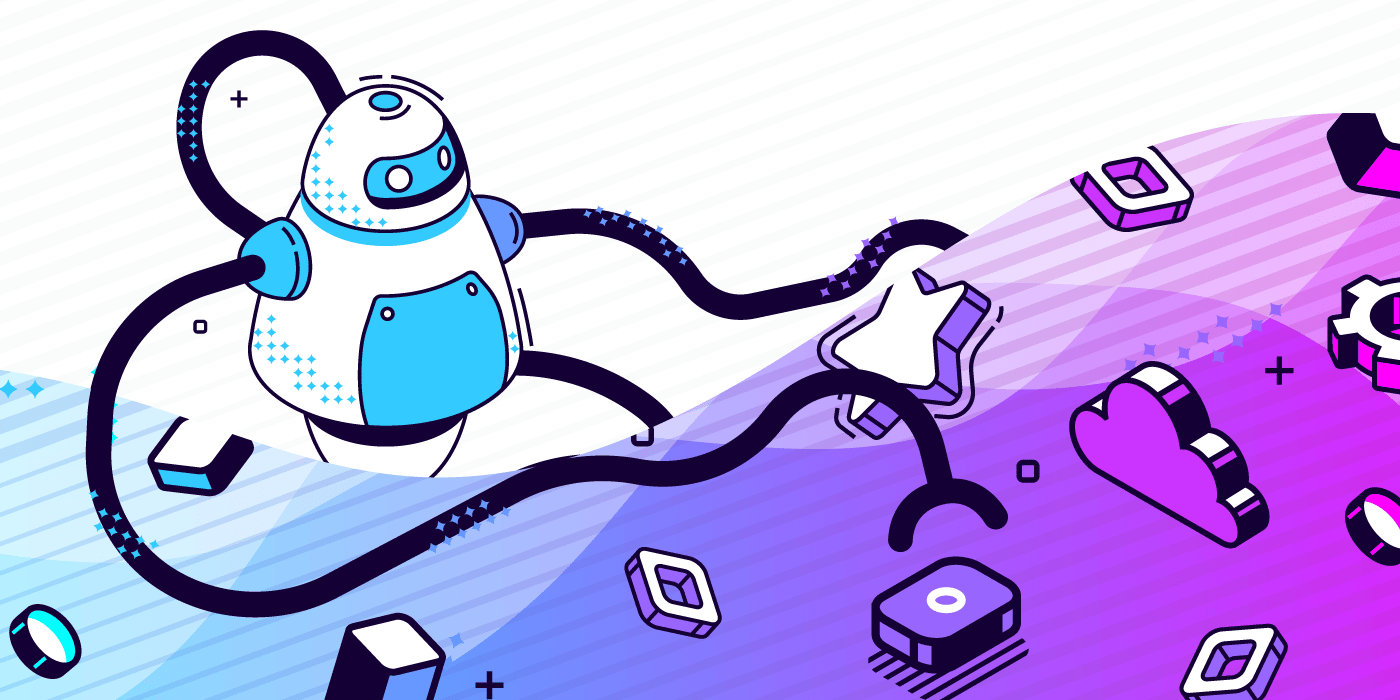
There’s no doubt we’ve entered the era of IT automation. SaaS environments are no exception, and the SaaSOps automation revolution is underway.
Automation is a journey—and the horizon shows that the destination is zero-touch IT.
In this blog post, we’ll dive into some highlights of our newest original research at BetterCloud. In our latest SaaSOps Automation Report 2022: The Rise of Zero-Touch IT, we explore the growing imperative to automate SaaS operations, its massive impact, and what it all means for IT.
Why zero-touch automation is increasingly important
IT leaders are moving beyond single task automation and onto orchestration and zero-touch automation.
In the world of zero-touch automation, IT aims to remove every manual touchpoint to orchestrate entire IT processes. Each process you orchestrate using zero-touch automation is a win-win.
IT jettisons the tedious, repetitive work—trading it for more engaging and innovative activities. Meanwhile, employees get fast access to the tools they need to do their jobs.
Along the way, you eliminate human error. As a result, your SaaS environment becomes more secure, and sensitive data is proactively kept safe.
With this context in mind, we wanted to get insights from IT professionals about the state of SaaSOps automation and how zero touch is emerging.
SaaSOps Automation Report 2022: The Rise of Zero-Touch IT
Our research set out to understand organizations at different stages in their automation journey. By using a well-known market research panel, we surveyed 413 IT professionals who work at organizations that use SaaS for at least 25% of their enterprise applications.
Among respondents, there were three groups:
- Automation Leaders who’ve automated at least 50% of SaaS-related tasks,
- Automation Newbies who’ve automated less than half of SaaS-related tasks, and
- Future Automators who don’t automate yet, but plan to this year
For each group, among other things, our research explores:
- Frustrations that automation could solve
- How the help/service desk is loaded with automation opportunities
- Why the rise of zero-touch IT can help reduce your high IT turnover
- The biggest benefits automation has delivered so far
- How zero-touch IT is crucial to an organization’s future
Here are a few highlights from the report.
1.) Complex SaaS environments have IT drowning in manual, repetitive work
As SaaS adoption rises, SaaS environments grow increasingly complex to manage. Access management, permissions, file security, user lifecycle management—it all amounts to a deep, swirling ocean of mundane, manual tasks.
IT might be keeping the lights on, but the tedium prevents them from working on strategic projects that improve margins, create better customer experiences, and/or raise revenues.

And it’s across the spectrum of automation groups too. A whopping 92% of Future Automators say they spend too much time on repetitive, manual tasks that could be automated.
Even among Automation Leaders, 65% agree they spend too much time on routine work. And 72% of them say it prevents them from working on projects with real strategic business value.
2.) Employees wait too long for help desk tickets to be resolved, and IT knows automating SaaS operations can help
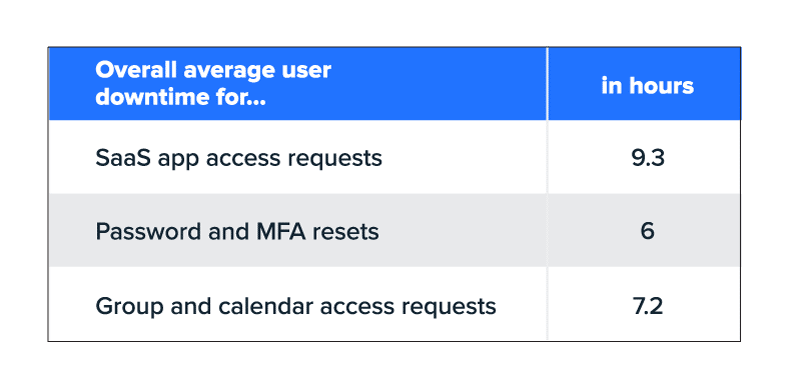
Since IT teams are so stretched, employees are waiting too long for IT to resolve tickets. The impact to the organization, unfortunately, is an idle employee and a poor employee experience.
In fact, the average user downtime for a simple password or multi-factor authentication reset is 6 hours. A SaaS app access request is 9.3 hours.
So it begs the question: Can your organization afford the lost productivity from employees who must wait nearly a day for a simple request that can be easily automated?
Meanwhile, IT knows that zero-touch automation is a solution to help desk woes.
Let’s take Automation Leaders. Forty-two percent of them say they could automate another 51 to 75% of their help desk ticket resolutions. Another 14% say more than 75% of ticket resolutions could get automated.

Meanwhile, 60% of Future Automators think they could automate away less than half of help desk tickets.
The lesson here: The more you automate, the more you learn almost every task can be automated—backed by Automation Leaders who have 34% fewer SaaS-related tickets per week than those who don’t automate.
3.) Zero-touch automation is critical to IT’s career development, IT employee experience, and retention
According to BetterCloud research, IT turnover currently stands around 23%. With high turnover and IT talent scarcity, zero-touch IT will be increasingly important for IT leadership and the whole IT team.
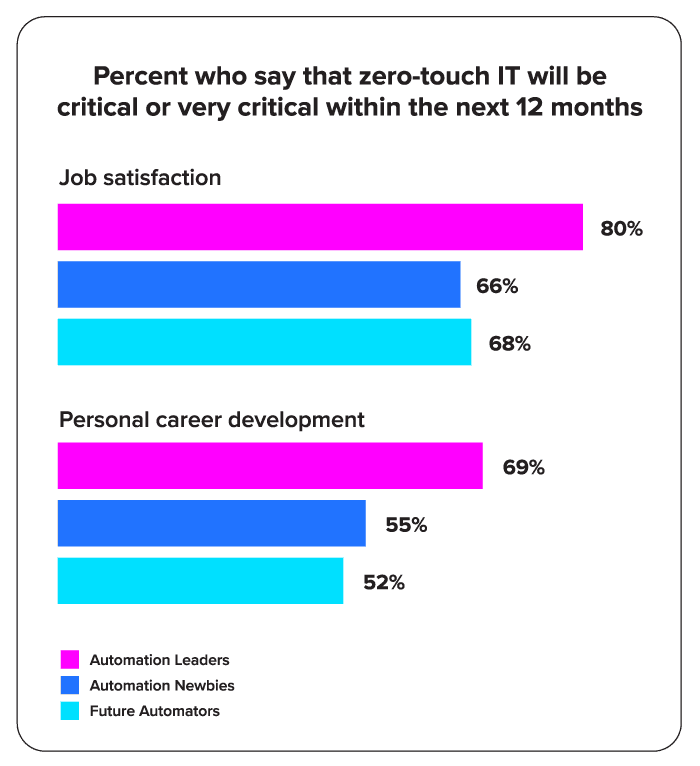
First, it’s increasingly necessary for IT employee retention.
Just look at the Automation Leaders. Eighty percent say zero-touch IT will be very critical or critical to job satisfaction in the next 12 months. Almost 70% of them also agree that it’ll be a critical part of their individual career development, if it isn’t already.
Once IT teams begin to automate, they get firsthand experience with its positive impact. For many, they start by automating a process like offboarding. Then, they improve that process, where it grows from offboarding birthright SaaS apps to all apps.
Before you know it, IT automates mid-lifecycle changes and other processes like password resets and app requests.
The end result for IT? A far more interesting and rewarding job with time to work on strategic projects that truly help the business and grow innovation—which are certain to help retain IT talent.
4.) Automation delivers benefits: About 70% say the biggest upside to automating the SaaS environment has been productivity gains
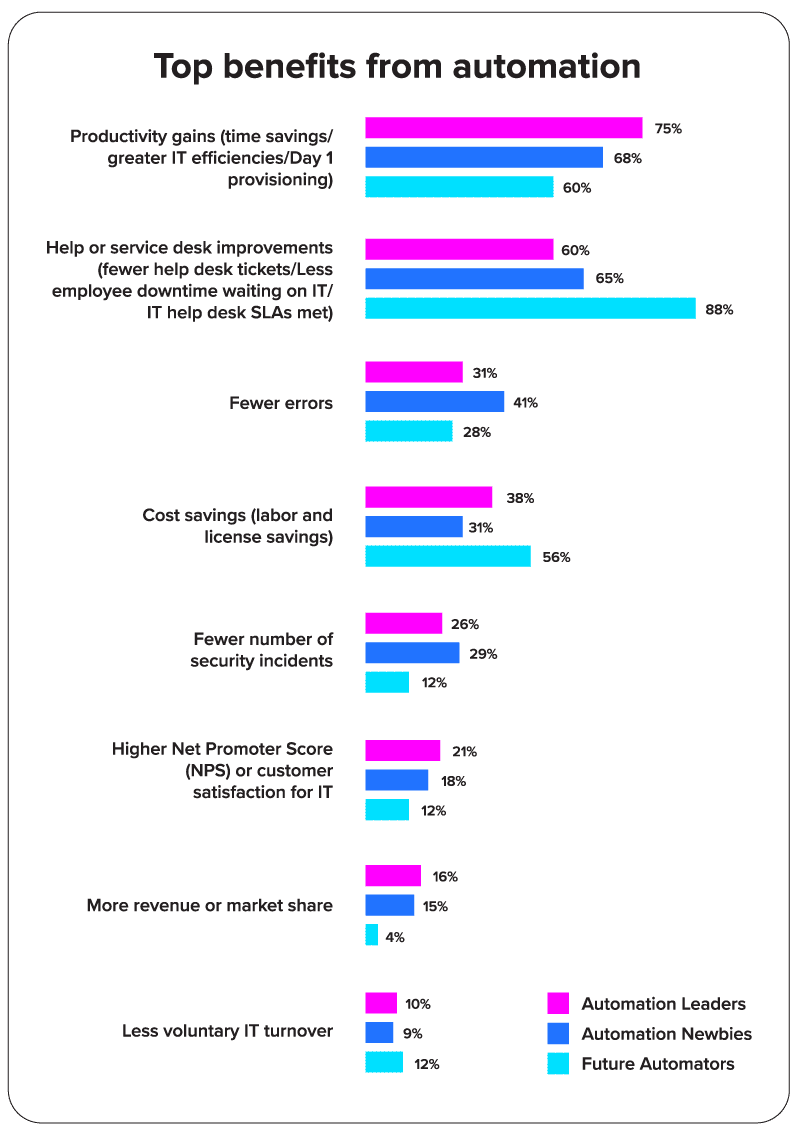
When looking at organizations who have experience with automation, the biggest benefits they’ve experienced are:
- Productivity gains,
- Help or service desk improvements, and
- Fewer errors
Meanwhile, Future Automators are clearly motivated by different reasons. Likely driven by IT talent scarcity, their top benefit they expect automation to deliver is, by far, at 88%, help/service desk improvements. A distant second, at 60%, is productivity gains and third, at 56%, is cost savings.
Fortunately, these organizations that are beginning their automation journey will enjoy all three perks.
So what does IT expect in the future?
5.) The path forward—for better data security and IT operational efficiency—is zero-touch automation
As we look to the coming year, organizations must meet the simultaneous business requirements of:
- growing productivity,
- cutting costs, and
- improving IT employee retention.
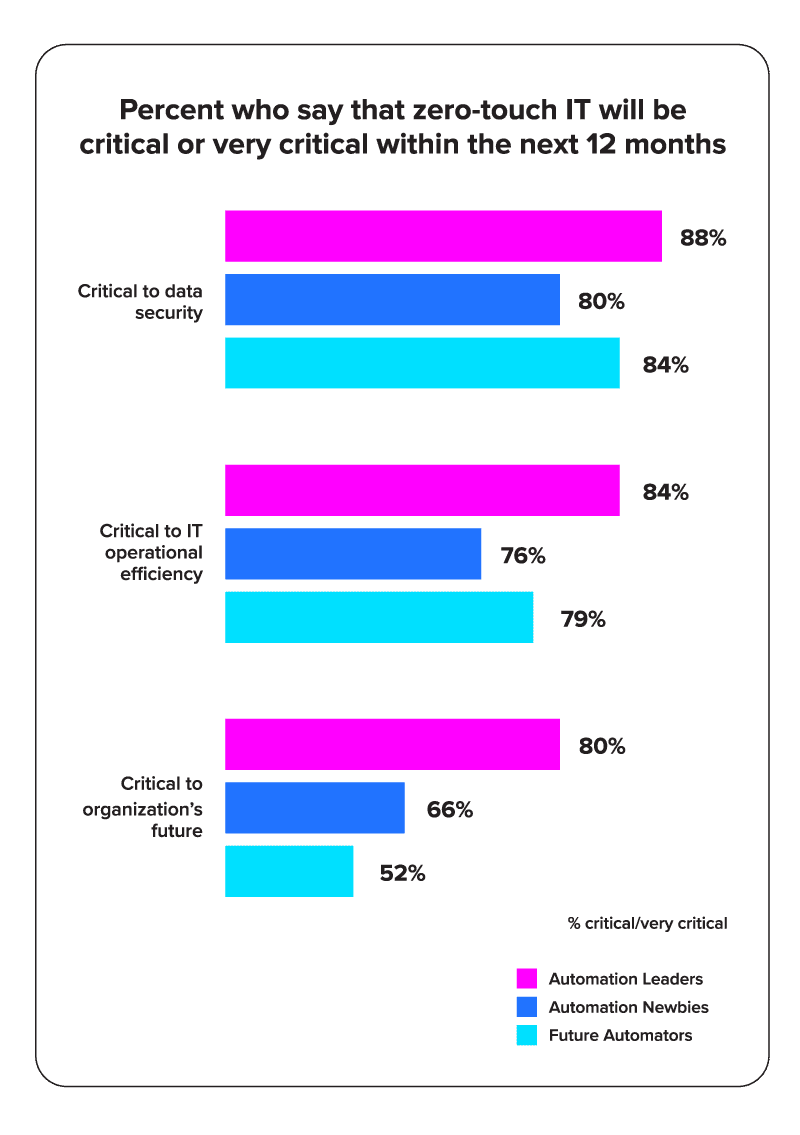
The time for zero-touch IT is now, and there’s strong consensus. More than 80% of organizations say in the next 12 months, zero-touch automation will be critical or very critical for data security and IT operational efficiency.
Most significantly, though, is how many IT professionals consider zero-touch IT critical to their organization’s future.
As the level of SaaS usage and manual work rises, zero-touch IT becomes increasingly crucial. Even Future Automators understand the need for it. More than half (52%) say it’s critical to their company’s future, and a monumental 80% of Automation Leaders feel the same way.
The bottom line, though, is that organizations across varying levels of automation maturity all agree that zero-touch IT is critical to organizational health and future competitiveness.
Grab the full report to learn more the rise of zero-touch IT
Download the full report to learn:
- The #1 task your peers most want to automate using zero-touch IT
- The single biggest driver behind automation
- The most urgent challenges automation is solving today
- 5 tips to get started with zero-touch automation





